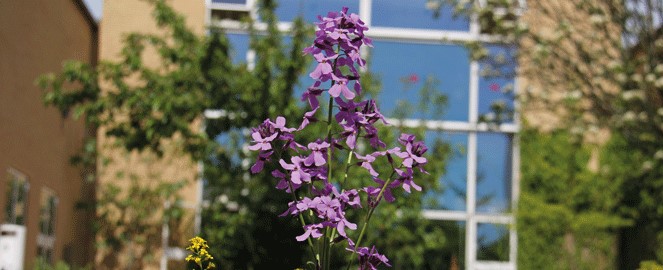THE MEDICINAL HERB GARDEN

Visit the Steno Museum's beautiful herb garden
Hidden behind the curved yellow wall of the garden, you will find an oasis of medicinal plants and herbs. Here you can enjoy the abundance of colours and delightful scents, sit on a bench and enjoy the tranquillity or even your packed lunch.
People have always used plants to treat sickness. Originally, they were wild plants gathered from nature. In the Middle Ages, medicinal plants were grown in the gardens of monasteries. The medicinal herb garden at the Steno Museum is reminiscent of a cloister garden. Here you can find many old and well-known medicinal herbs. The 1800s saw the discovery of the active ingredients in medicinal herbs and their isolation and synthetic production.
Today the pharmaceutical industry has overtaken the production of medicine and about 40% of their products have active ingredients that originate from plants.
Many Danes still use dried herbs and plant extracts, which are sold in supermarkets and health shops. In 1992, the Danish Medicines Agency introduced stricter legislation for the approval of plant based medicine. Approved plant medicine is now sold under the name ‘herbal medicine’. Herbal medicine is used in the treatment of the simpler ailments, which do not warrant a doctor’s visit.
The medicinal herb garden contains approximately 250 different plants that either have been or still are used in medicine. Some of the herbs were used in the beak of the pest doctor’s mask when visiting patients and others have been used to treat everyday sicknesses and ailments. Maybe your nose can lead you to your favourite culinary spice?
The medicinal herb garden also houses a weather station.